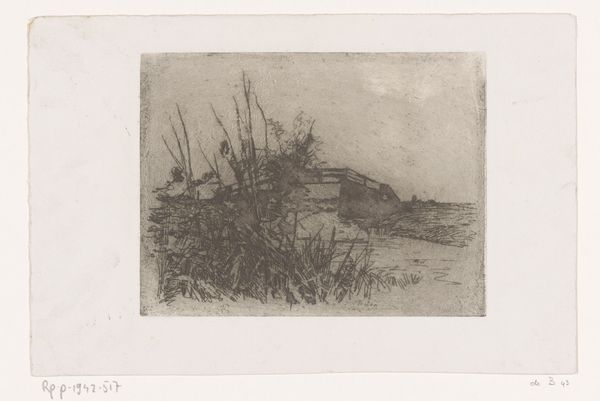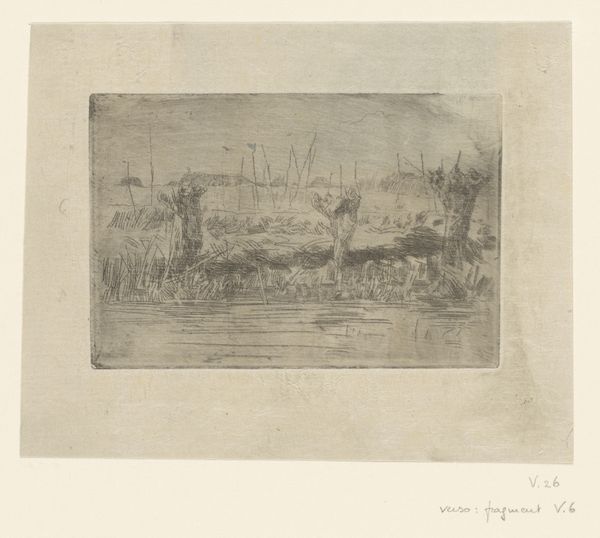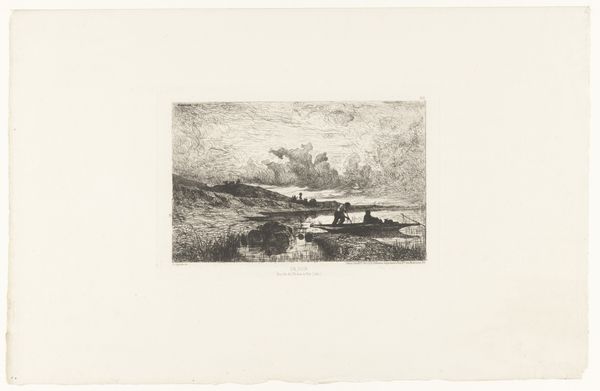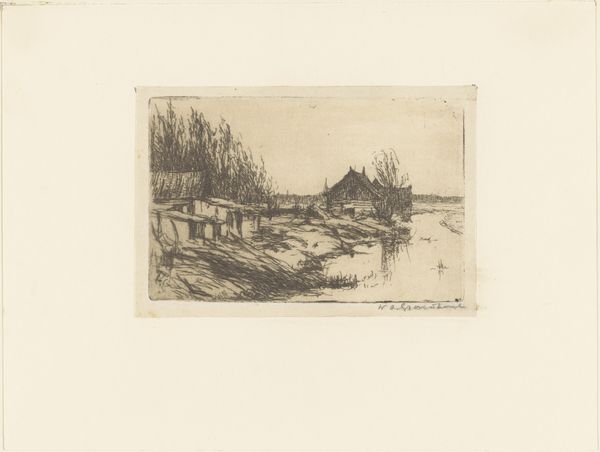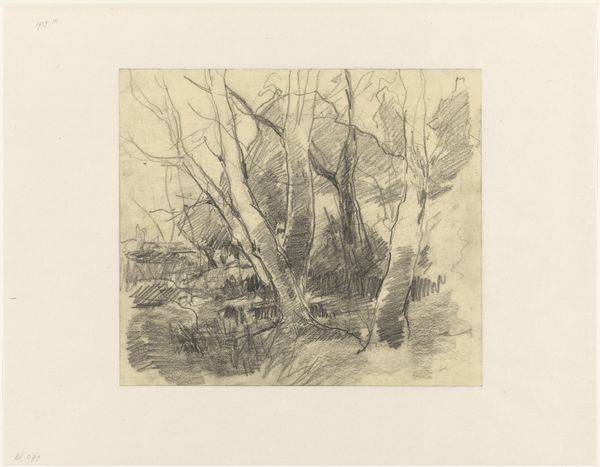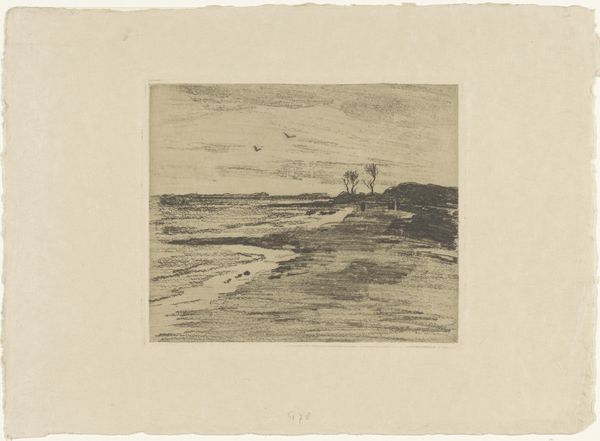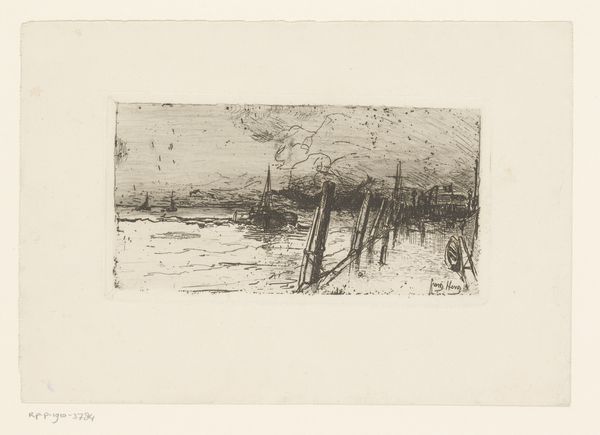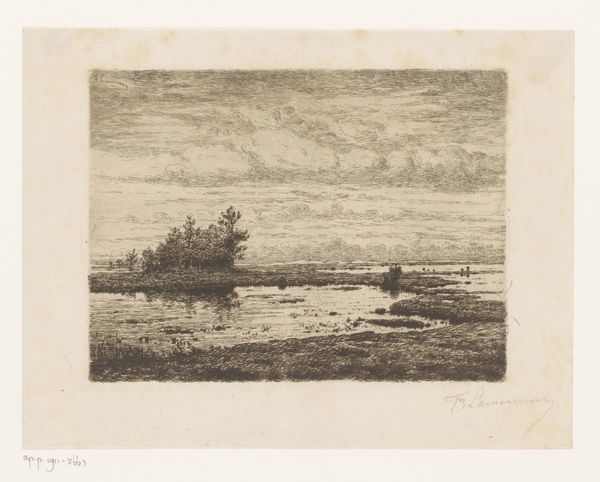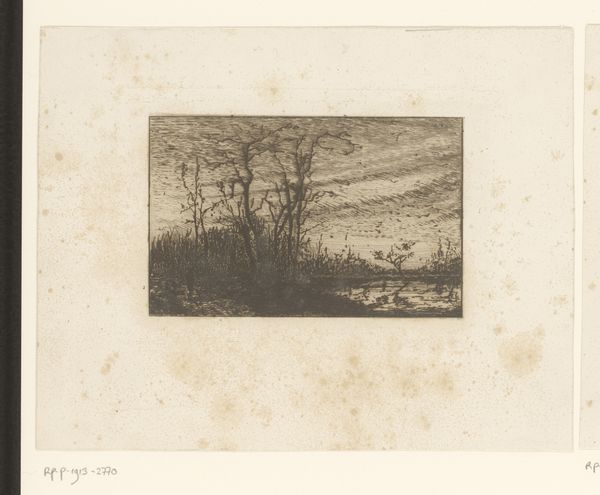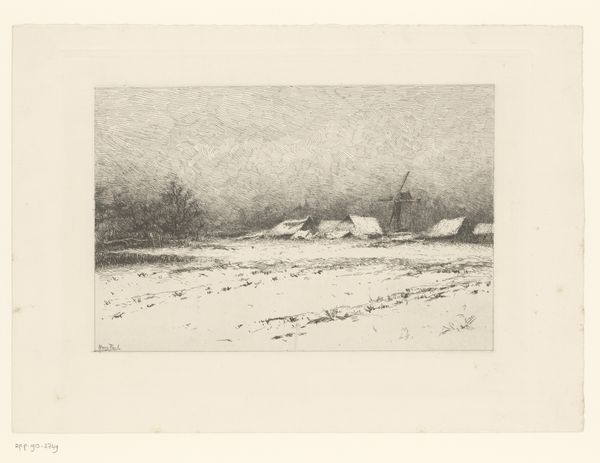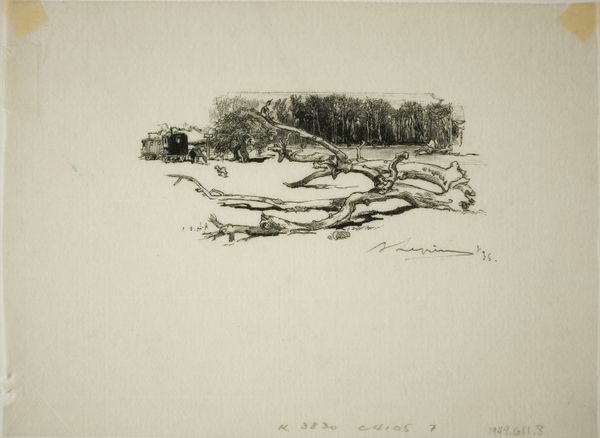
drawing, print, etching
#
drawing
#
dutch-golden-age
# print
#
etching
#
landscape
#
etching
#
realism
Dimensions: height 120 mm, width 159 mm
Copyright: Rijks Museum: Open Domain
Editor: So this etching is titled *Brug over een sloot, bij Giethoorn*, which translates to 'Bridge over a ditch, near Giethoorn'. It's by Willem Bastiaan Tholen, placing its creation somewhere between 1870 and 1931. There's a quiet stillness to it, despite the intricate lines. What do you make of the symbols and imagery in this seemingly simple landscape? Curator: The bridge itself speaks of connection, a transition from one state to another. Consider the water it spans: water often represents the subconscious, the fluid, changeable aspects of our inner selves. Does the bridge offer passage across the divide between the conscious and unconscious, or perhaps between known and unknown? Editor: That’s interesting, I hadn't thought of it that way. So, you're suggesting that even something as mundane as a bridge in a rural scene can carry symbolic weight? Curator: Absolutely. Note also how the reeds and vegetation frame the bridge. These could be interpreted as nature reclaiming or perhaps guarding the passage. And what does Giethoorn, the specific location, evoke for someone familiar with Dutch culture? Does it summon associations with tranquility, tradition, or something else entirely? Editor: I suppose it's easy to overlook how place itself is loaded with cultural significance. It adds layers to the overall meaning, doesn’t it? Curator: Precisely. Every element, down to the artist’s choice of etching – a medium capable of both precision and suggestive ambiguity – contributes to the symbolic tapestry. The slight blurriness gives this scene a somewhat dreamlike or nostalgic feel, right? How does that influence your interpretation? Editor: I see what you mean. It invites you to look deeper, beyond the surface representation. Curator: Indeed. And that invitation is, I think, the true power of Tholen’s work. It subtly asks us to contemplate not just what we see, but what it evokes within us, given our own backgrounds and memories. Editor: I'm starting to appreciate how an image can serve as a reservoir of cultural memory and personal reflection, rather than just a pretty picture. Curator: Exactly. Seeing art isn’t only looking; it’s remembering, questioning, and connecting.
Comments
No comments
Be the first to comment and join the conversation on the ultimate creative platform.
